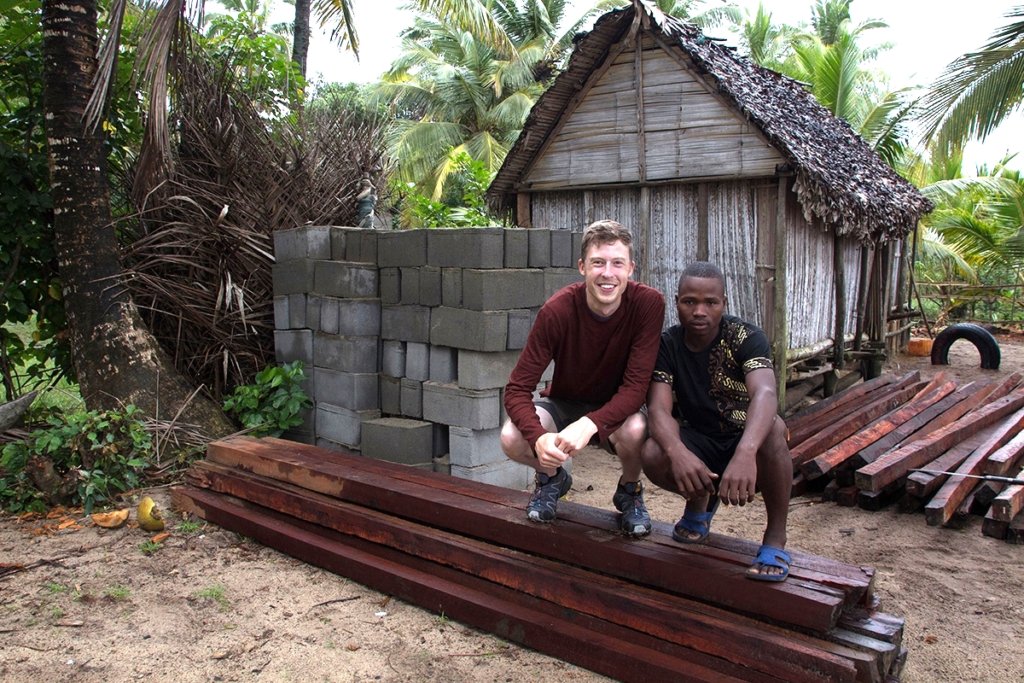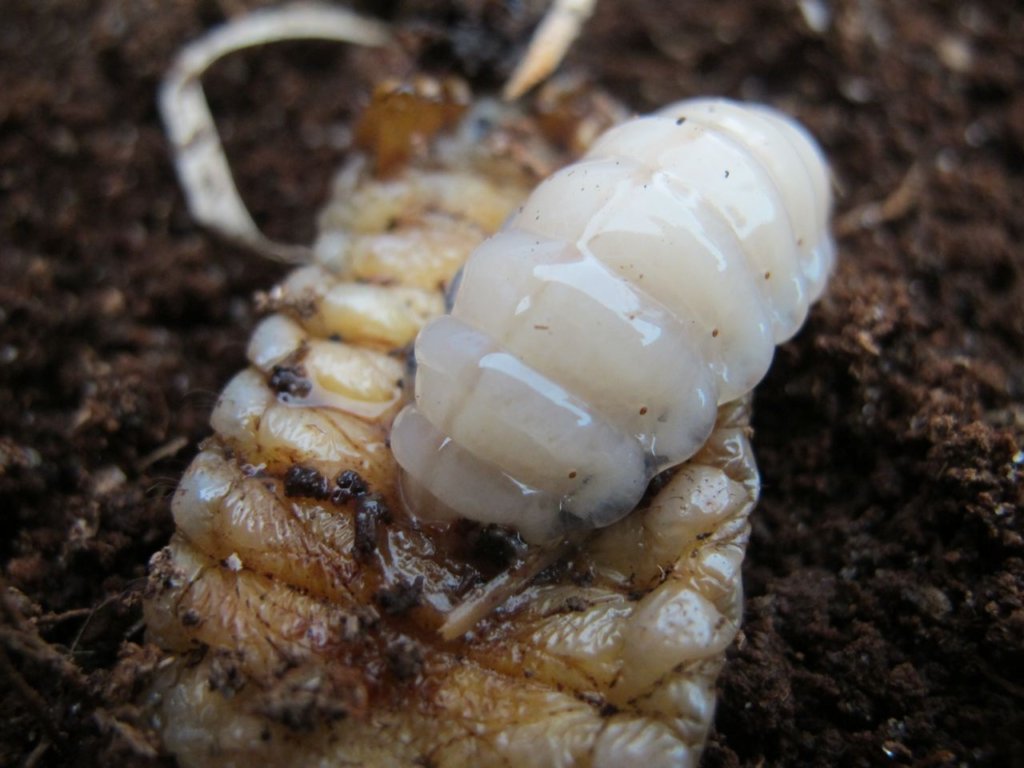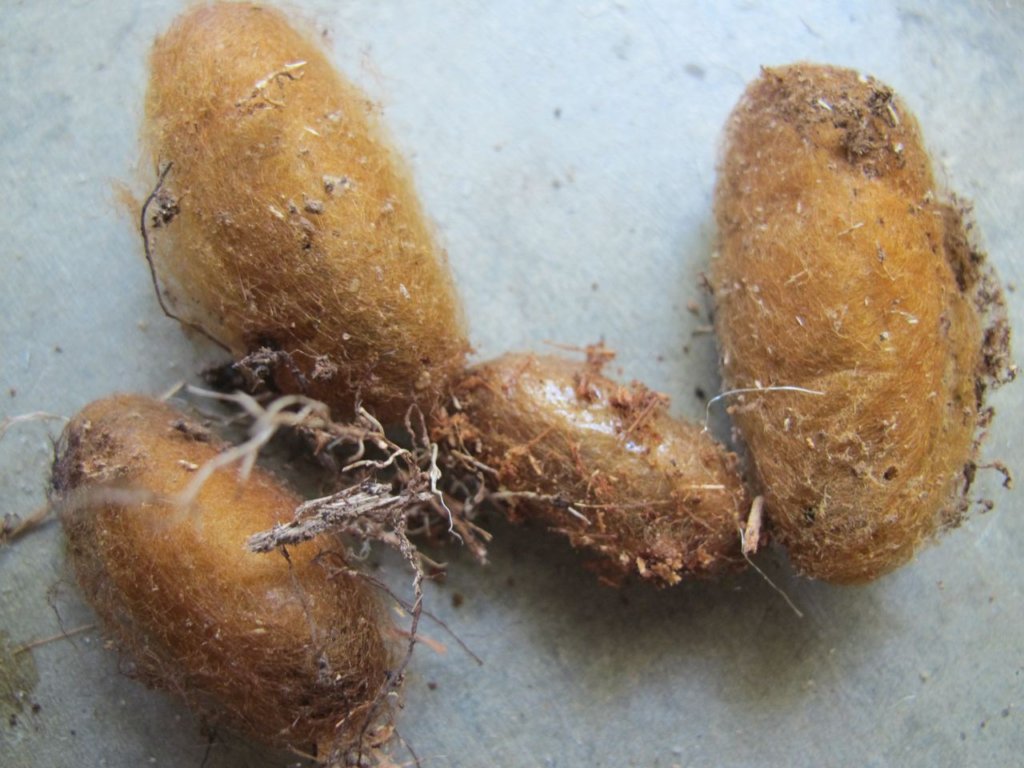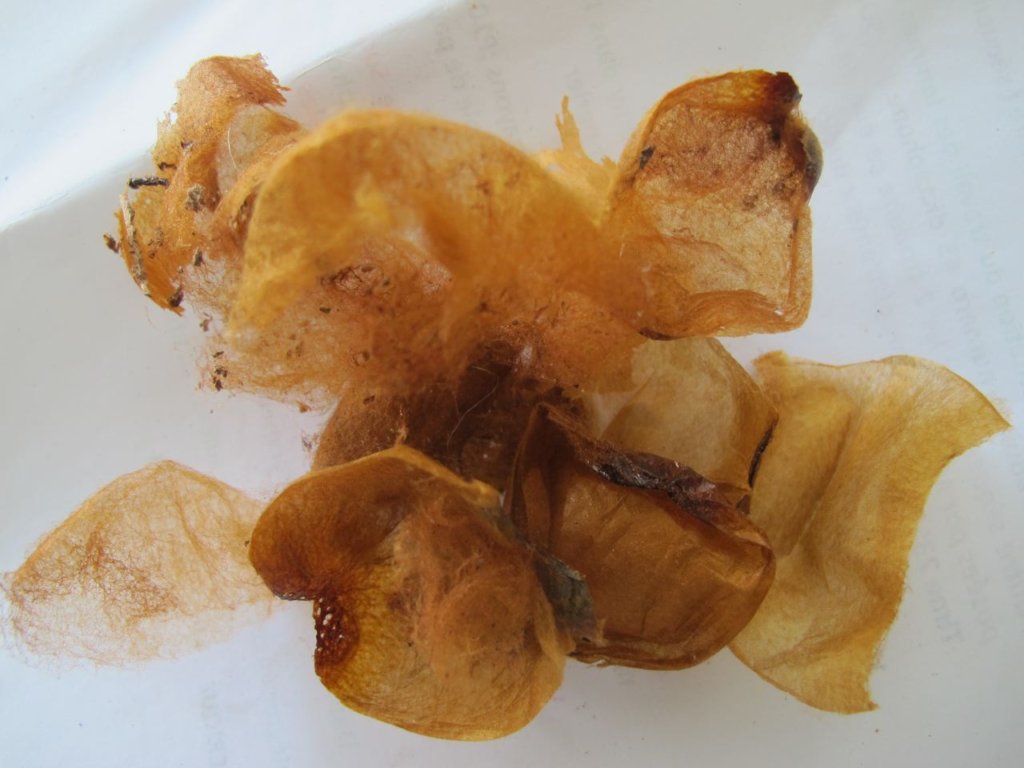By Kerry O'Neill and Mamy Ratsimbazafy | Assistant Director, CPALI and Director, SEPALI
It’s that time of year! With the expected emergence of the adult Oryctes beetles and Fulgoridae looming near, the SEPALI team is breaking ground on a new enclosure. Led by volunteer, Matthew, the structure will be built on the SEPALI demonstration site and will serve as an insectary and moth rearing house for the project.
Wait, don’t you already have a moth garden? Yes, we did. You may have seen pictures of the previous moth garden in our newsletters: a basketball court-sized enclosure with native plants, insects and a small pond. Unfortunately, the garden was damaged in a cyclone last winter and eventually fell victim to thievery due to the highly coveted fishing nets that were used in construction. Many of the plants are still there, but the enclosure has since been removed.
Learning from our mistakes, the new garden will include upgrades to ensure longevity. First, treated lumber will be used for construction instead of bamboo, which quickly degrades in Maroantsetra due to weather conditions and native bamboo-boring insects. The walls and ceiling of the new garden will be made of industrial-grade agricultural netting, which should be more resistant to sun damage than the previous fishing nets. Finally, the nets will be removable so that they can be safely stored during cyclone season (December through March) and returned to the structure each spring. This will also allow a period when natural pollinators and animals typically too large for the pore-size will be able to enter the enclosure and access the plants.
Matthew and SEPALI team members Lava and Richard, are hoping to have the project completed by late October. Once constructed, a care-taker and his family will move into the new SEPALI watchman’s house to help keep the demonstration site safe and productive.
A Tiny Golden Cocoon
One of the many goals of the new enclosure is to give the SEPALI team a place to rear silk moths and other insects including water bugs, dragon flies and rhinoceros beetles. Rhinoceros beetles (Oryctes) in particular have been a source of curiosity for the SEPALI staff in recent months. While the team was investigating their potential as a protein source, a recent survey revealed instead the secret life of parasitic wasp larvae.
The cycle begins when a small, female wasp with a black body and dark, shiny wings lays a single egg on the abdomen of an Oryctes beetle larva. When the egg hatches, the wasp larva emerges and feeds on the beetle larva for a period of about two weeks. By the time the Oryctes larva dies, the wasp larva is mature enough to spin a cocoon. (Wasps too can spin cocoons!) The result is a tiny, golden, four-layered cocoon where the wasp will complete its transformation into an adult.
While the cocoon is likely too small to do anything productive with, it is a source of fascination for a team that studies all-things-silk. Hopefully the new enclosure will help us answer more questions about the lifecycles, predators, and protection of our insect friends.
Project reports on GlobalGiving are posted directly to globalgiving.org by Project Leaders as they are completed, generally every 3-4 months. To protect the integrity of these documents, GlobalGiving does not alter them; therefore you may find some language or formatting issues.
If you donate to this project or have donated to this project, you can recieve an email when this project posts a report. You can also subscribe for reports without donating.





